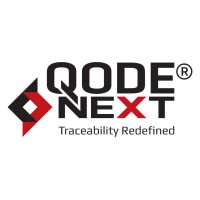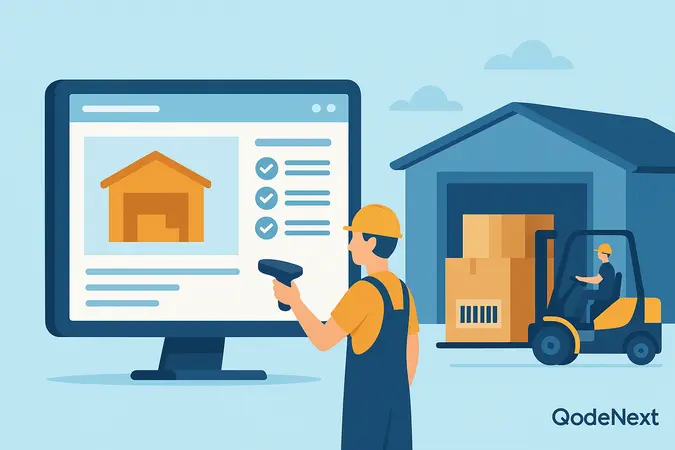In today’s data-driven world, enterprises are turning to intelligent tracking technologies to improve visibility, reduce operational costs, and enhance decision-making. Bluetooth Low Energy (BLE) asset tracking is one such innovation that’s redefining how businesses manage their assets in real time.
Whether in manufacturing, warehousing, logistics, or healthcare, BLE asset tracking solutions offer an efficient, scalable, and cost-effective way to track valuable resources with precision.
What is BLE Asset Tracking?
Bluetooth Low Energy (BLE) is a wireless communication technology designed for minimal power consumption and short-range data transmission. Unlike traditional Bluetooth, BLE operates with extremely low energy requirements, making it ideal for continuous asset monitoring.
By attaching BLE tags or beacons to assets, organizations can monitor their real-time location through BLE-enabled readers or gateways. These systems transmit data to a centralized BLE tracking platform, allowing users to view, analyze, and manage asset information instantly.
BLE not only provides location data but also collects performance metrics such as usage frequency and maintenance requirements — helping businesses optimize operations and extend asset life cycles.
Key Features of BLE Asset Tracking
Modern BLE tracking systems come equipped with advanced features that make them indispensable for enterprises.
-
Real-Time Tracking: Instant visibility into asset movement within premises.
-
Low Power Consumption: BLE devices run for years on small batteries.
-
Short-Range Communication: Ideal for indoor tracking and close-proximity operations.
-
Cloud-Based Management: Centralized data storage with secure remote access.
-
Alerts & Notifications: Receive instant email or SMS alerts for anomalies.
-
Web & Mobile Dashboards: Monitor assets through intuitive consoles anytime, anywhere.
How Does BLE Asset Tracking Work?
The BLE asset tracking system operates using a network of tags, readers, and software platforms.
-
BLE Tags or Beacons continuously broadcast Bluetooth signals.
-
BLE Readers or Gateways detect these signals and determine the asset’s position.
-
The data is sent to a centralized software platform that processes and displays real-time insights.
Types of BLE Tracking Systems
There are two main types of BLE-based asset tracking systems:
-
Active BLE Tracking: Uses battery-powered tags that actively send signals to nearby receivers.
-
Passive BLE Tracking: Relies on reflected radio waves (like RFID) for signal detection.
Both systems help businesses monitor equipment, vehicles, and inventory effectively, but active tracking is more common for high-value assets and critical infrastructure.
Core Components of a BLE Asset Tracking System
A typical BLE asset management system consists of three main components:
1. BLE Tags
These small, battery-powered devices transmit signals that indicate the asset’s location. BLE tags are durable, cost-effective, and compatible with most modern Bluetooth devices (4.0 and above).
2. BLE Readers or Gateways
Readers detect signals from BLE tags. They can be smartphones, tablets, or dedicated gateways, placed strategically in hallways or work zones. This flexibility allows businesses to implement BLE tracking without heavy infrastructure investment.
3. BLE Tracking Platform
The platform acts as a centralized database and dashboard, storing asset data, generating alerts, and integrating with ERP or inventory management systems. It gives organizations a complete overview of their assets across multiple locations.
Why BLE Asset Tracking is Becoming Popular
1. Low Power Consumption
BLE tags are designed for efficiency, using minimal energy and lasting for years without frequent battery replacements. This translates to lower maintenance costs and longer device lifespans.
2. Sustainability
By reducing power usage and hardware waste, BLE systems support eco-friendly business operations, aligning with modern sustainability goals.
3. Wide Coverage Range
BLE technology can transmit data up to 300 meters, making it suitable for large facilities like warehouses, factories, and hospitals.
4. High Accuracy
BLE provides precise location data, often accurate within a few feet. This makes it perfect for real-time asset tracking, navigation systems, and indoor mapping applications.
5. Cost-Effectiveness
Compared to other tracking technologies, BLE offers lower ownership costs and requires minimal infrastructure, making it accessible to small and large enterprises alike.
6. Versatility
BLE tags can be attached to virtually any object — from office furniture and machinery to containers and medical equipment — making them a flexible and adaptable tracking solution.
7. Scalability
Businesses can start small and expand their BLE tracking networks as needed. The system can easily grow with the organization’s evolving requirements.
8. Enhanced Security
BLE asset tracking ensures data encryption and authorized access, reducing the risk of cyber threats and data breaches. The integration with existing security infrastructure makes it both safe and reliable.
Benefits of BLE Asset Tracking for Enterprises
-
Improved operational visibility and efficiency
-
Reduced manual tracking and human error
-
Enhanced inventory management and asset utilization
-
Predictive maintenance through data insights
-
Lower total cost of ownership
-
Seamless integration with IoT and ERP systems
Conclusion: The Future of BLE Asset Tracking
BLE asset tracking is more than a technology — it’s a strategic investment in operational intelligence. With its combination of low power consumption, high accuracy, and scalability, BLE stands out as the ideal solution for smart asset management in today’s digital-first environment.
As industries continue to adopt connected technologies, Bluetooth Low Energy asset tracking will play a vital role in driving efficiency, security, and sustainability.
Partner with QodeNext to deploy advanced BLE asset tracking systems tailored to your enterprise needs.
Get in touch with us today and take the next step toward smarter, data-driven asset management.






